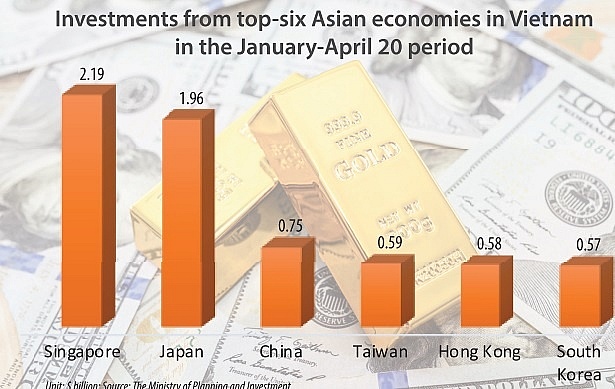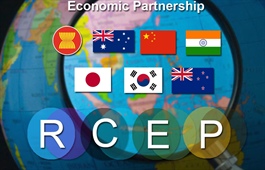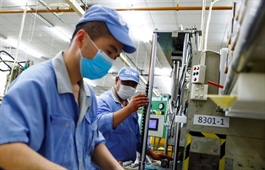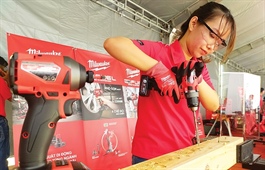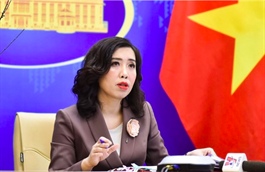RCEP can rejuvenate economy across Asia-Pacific
RCEP can rejuvenate economy across Asia-Pacific
The newly-inked Regional Comprehensive Economic Partnership (RCEP) represents the world’s largest trading bloc by economic value and population. But what does this mean for signatories as the region looks to a post-pandemic future?

Russell Reed, managing director, UPS Thailand and Vietnam
|
One-third of global GDP: that’s the current collective income of all signatory countries to the RCEP. Encompassing all states in ASEAN, as well as Australia, China, Japan, New Zealand, and South Korea, it is the biggest trade deal ever signed, with the bloc covering nearly 30 per cent of the world’s population.
The RCEP countries represent a huge opportunity for Vietnam, in which Vietnam’s trade with signatory countries reached $240 billion, accounting for nearly 55 per cent of Vietnam’s total import-export turnover as of the end of October 2020.
Against the backdrop of tremendous upheaval caused by the coronavirus pandemic, the RCEP takes on a new significance as a regional, even global, growth stimulator for a world eager for recovery. It represents a marked reduction in barriers to trade across the region.
Researchers project that in the year 2030 alone, the RCEP will be generating an additional $186 billion of income for the global economy. Through substantially lowering barriers to trade among members, the agreement will pave the way for greater regional integration and cooperation, allowing countries to build on their strengths while filling gaps in their capabilities by working with other signatory markets.
A more unified set of trading regulations means businesses will not have to work through a complex, sometimes overlapping patchwork of rules when trading with different countries across the bloc – something which is particularly important given the region’s focus on intra-Asian trade.
Beyond improving the ease of doing business, the RCEP is also likely to spark the creation of new regional supply chains while further strengthening existing ones. This is by no means a new trend, but recent events such as trade tensions and supply chain resilience as a result of the pandemic, have served to accelerate trends. Vietnam has already experienced benefits from this shift, with per capita income increasing more than five times since 2010 as a result of global supply chain and production shifts to the country, particularly in the high-tech segment.
The RCEP is expected to be an added boon to Vietnam’s continuous push to improve product quality, enhance supply chain management, and appeal of Vietnamese products in the region. Especially for Vietnam, the RCEP is a great opportunity to invest in developing and boosting the value chain of high technologies.
Indeed, it is possible that some companies will be able to conduct all trade through the RCEP framework and adhere to just one set of trading regulations. RCEP-ready supply chains that bring all operations within the borders of the bloc can even help to simplify and reduce the cost of the movement of goods.
Prior to the signing of the RCEP, there was already a patchwork of trade agreements in place among ASEAN and several countries in the Asia-Pacific, and although the RCEP does not replace all of them, it does unify a number of them into a single agreement, creating a much more uniform approach to conducting trade in the region.
One important aspect is the reduction of tariffs across at least 92 per cent of all product lines, some as soon as the agreement comes into force, and some over the course of a number of years. In Vietnam, some products such as telecommunications, IT, textiles, footwear, and agriculture will benefit most from the reduction of import taxes.
But arguably the most significant benefit will be the cumulative rules of origin. Ordinarily, for a product to qualify for particular tariff exemptions under a trade deal, a sufficient proportion of it must be certified as “made” in the exporting country. Whether or not a product is considered as originating from a particular country depends on varying factors along the supply chain.
This can be challenging with a bilateral agreement involving only two economies, but under the RCEP, qualifying as an originating good becomes easier; as long as a sufficient proportion of the good being exported is made of inputs sourced from any of the 15 members of the bloc, it will qualify for the relevant tariff exemptions. Better still, businesses need only apply for a single unified RCEP certificate of origin to ship anywhere within the bloc, reducing the time and cost needed to apply.
The agreement also has provisions regarding competition, laying out rules to prevent anti-competitive behaviour across the bloc, while at the same time allowing individual markets to maintain certain exemptions on the basis of public policy or public interest.
The signing of the RCEP provides a tremendous opportunity for businesses across Asia to capitalise on cross-border trading opportunities. Having a range of geographically close markets open up will be important to smaller businesses that want to make their first forays into selling internationally.
Success is not a given though, and ensuring that businesses are able to get the most out of the deal will require careful logistical planning. There may also be instances where an existing trade deal between two countries offers better terms than those laid out in the RCEP, so some businesses may end up using different trading frameworks for different shipments, depending on what is being exported and where it goes. Navigating the global trade landscape can certainly involve complexities like these, but that should not be a reason for businesses to be daunted, even the smaller and medium-sized ones.
An experienced logistics partner taking care of the finer details in ensuring trade agreement compliance is all that is needed for businesses toreap the benefits of trade agreements and focuson whattheydobest.



